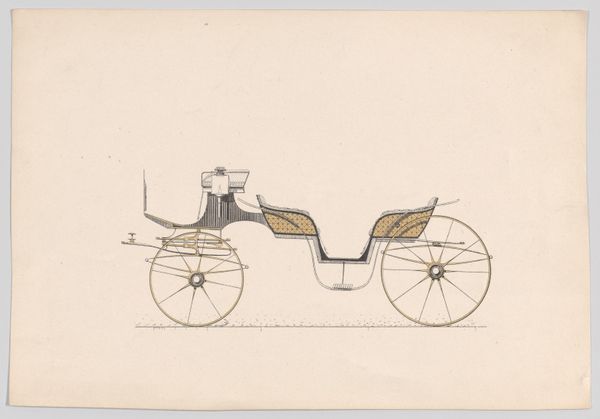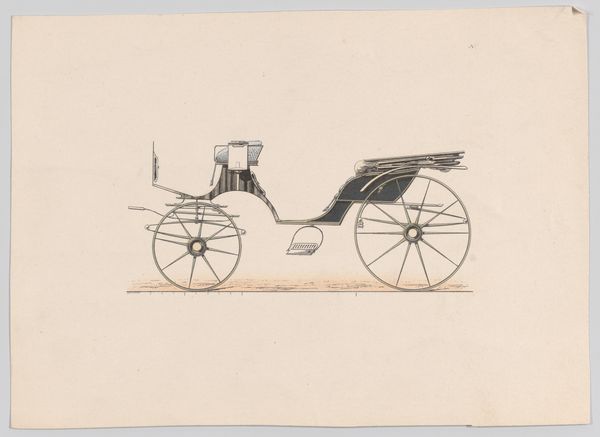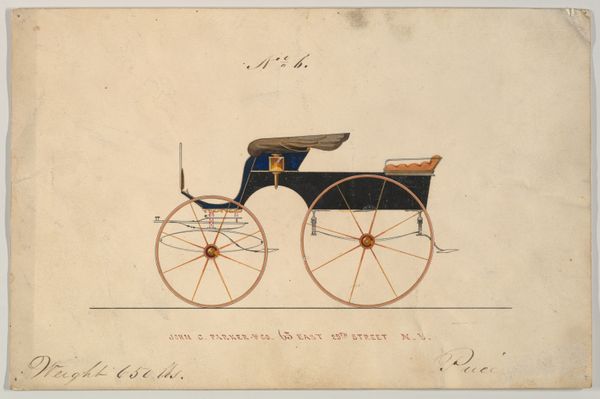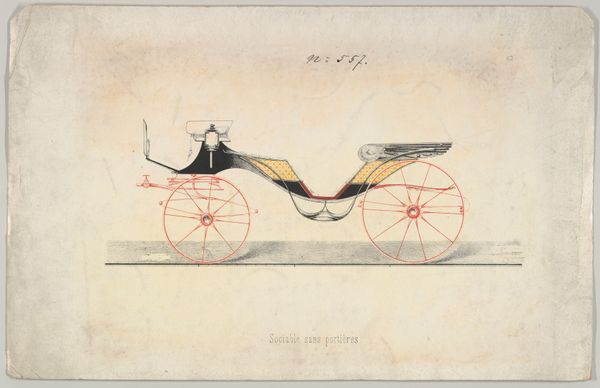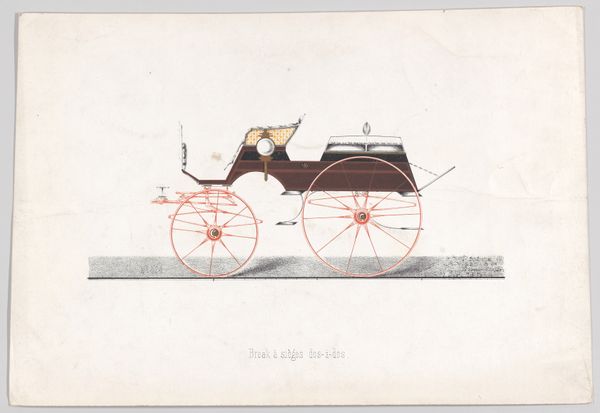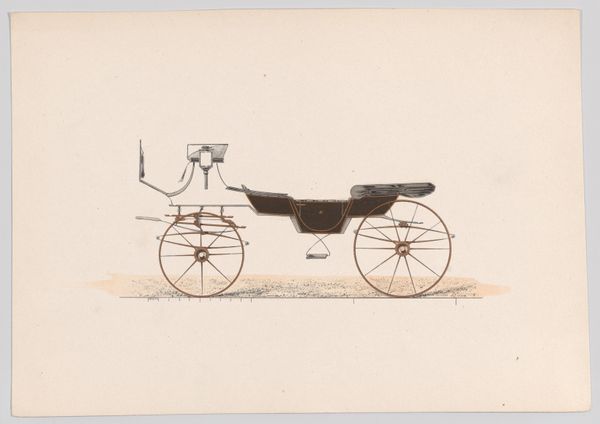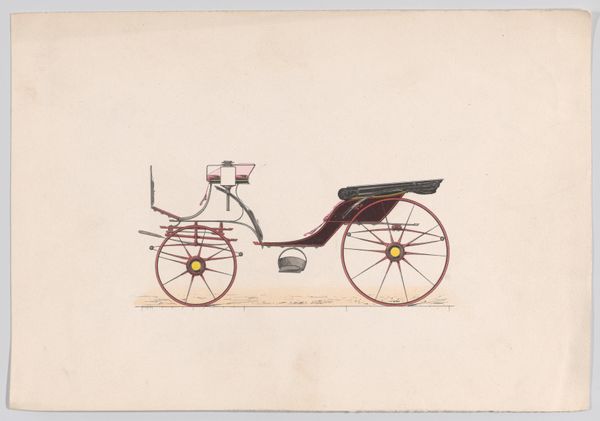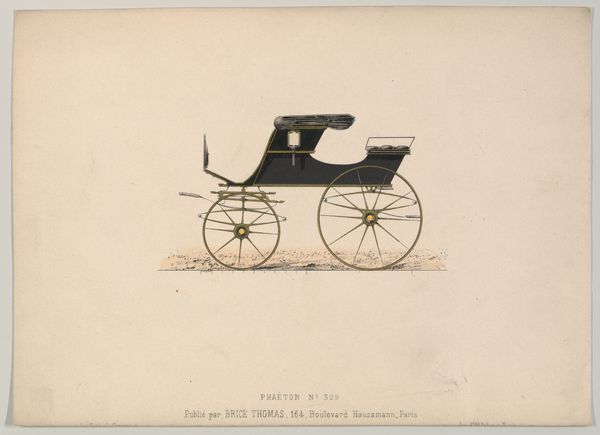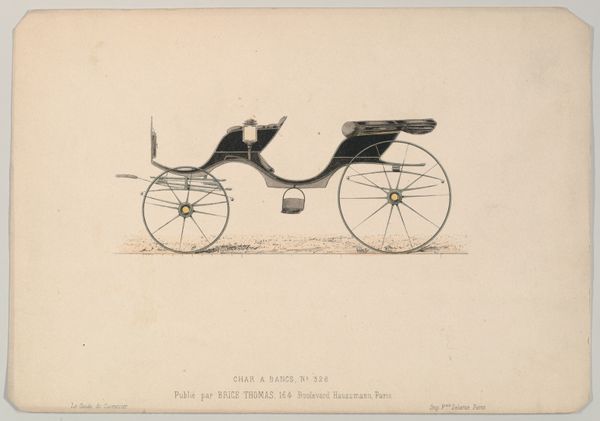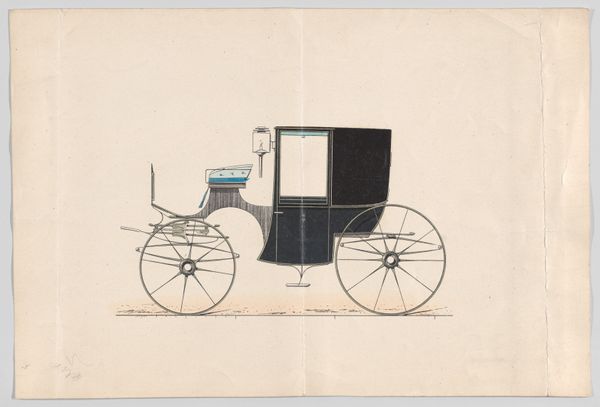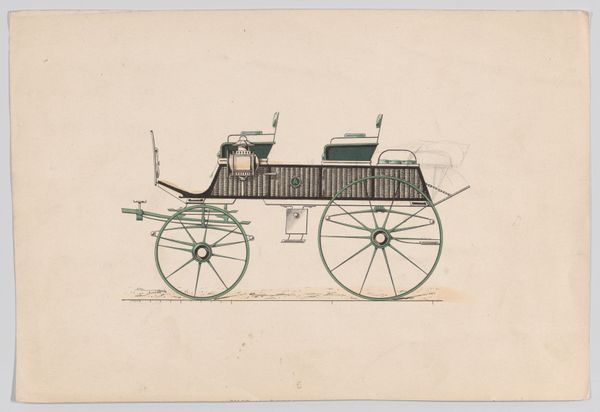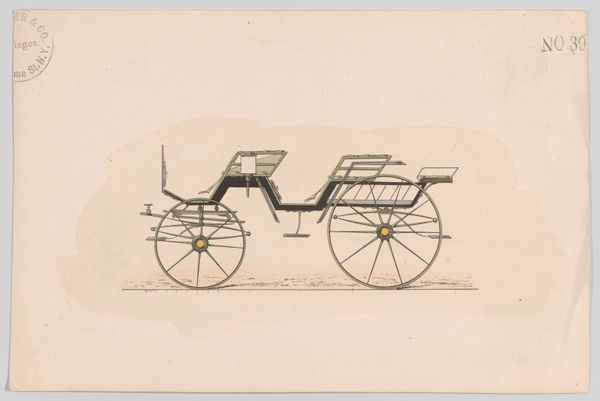
Dimensions: Sheet: 5 13/16 × 8 15/16 in. (14.8 × 22.7 cm)
Copyright: Public Domain
Curator: This is a design drawing, titled "Design for Pony Park Phaeton, no. 224." It was created sometime between 1865 and 1875. While we don't know the artist, it resides here at The Metropolitan Museum of Art. It’s rendered in colored pencil, capturing an elegant horse-drawn carriage. What’s your initial reaction to this piece? Editor: It has a wonderful fragility. The soft color palette and fine lines give it a very delicate feel, almost as if it’s a fleeting dream of a bygone era. Curator: That’s insightful. It is, after all, an industrial design drawing rather than fine art in the modern sense. In the mid-19th century, the rise of industrialization necessitated specialized skills in drafting and design. This object exemplifies the artistry applied to practical purposes in that era, the design being essential for engineering. Editor: It's more than just engineering, though. The curved lines of the carriage, the graceful wheels – there's an aesthetic sensibility at play that speaks volumes about Victorian society's aspirations for beauty and status even in the practical objects. Was this a common sight in city parks? Curator: Indeed. The "park phaeton" was intended for leisurely drives. Carriages, particularly elaborate ones like this design suggests, were potent symbols of social standing. Ownership and display played an enormous role in 19th-century class performance. Editor: So, a beautifully rendered illustration, a physical embodiment of privilege? I can imagine these carriages cruising through Central Park. There is an interesting parallel. Although intended for the upper class, they nonetheless occupied public spaces that at least theoretically anyone could visit, visually engaging, and possibly enticing. I also wonder, who created the drawings like these and their place in these rigid class structures? Curator: Good questions. Unfortunately, the name of this particular designer has been lost. But with further research in the museum archives we could learn more about this particular design and those like it, and potentially learn more about how such beautiful and aspirational carriages impacted class dynamics and design for a broader audience. Thank you for helping us investigate this piece more closely. Editor: Likewise. Thinking about access and aspiration always adds depth to how we engage with historical artifacts.
Comments
No comments
Be the first to comment and join the conversation on the ultimate creative platform.
